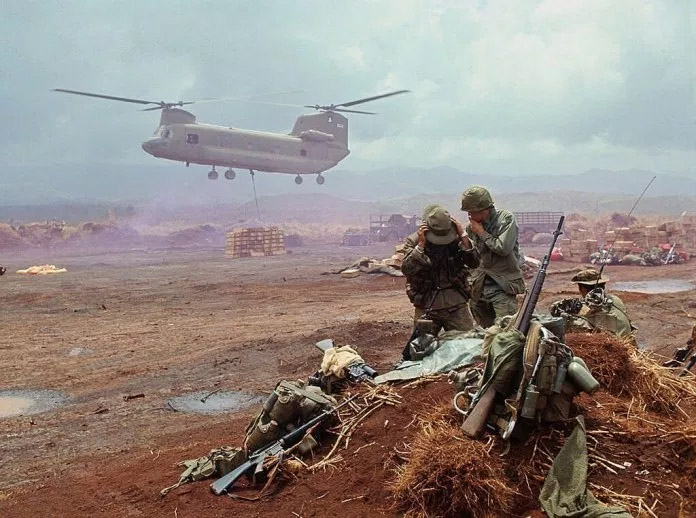 |
|---|
| 24 Mar 1971, Khe Sanh, South Vietnam - U.S. helicopter lowers supplies by cable sling onto field as GI's avoid airstream created by rotor blades. Asean Economist |
 
|
Vietnam demands Agent Orange compensation
Asean Economist
August 25, 2018
Vietnam’s Foreign Ministry has repeated demands that Monsanto and other US firms pay compensation to the country’s numerous Agent Orange victims.
An estimated 3 million Vietnamese citizens were exposed to Agent Orange during the American occupation, while its effects have allegedly been passed down through the generations.
On August 10, a San Francisco jury ordered Monsanto to pay nearly US$290 million in punitive and compensatory damages to Dewayne Johnson, a cancer patient whose terminal illness was deemed to have been linked to glyphosate in the manufacture’s weedkiller.
The school worker said his terminal cancer was a result of using the Roundup herbicide.
The firm said it was planning to appeal against the verdict.
Vietnam’s foreign ministry spokesperson Nguyen Phuong Tra said: “This case is a precedent that dismisses previous arguments that the herbicides supplied to the US military by Monsanto and other American chemical companies during the Vietnam War are not harmful to people’s health.
“We believe Monsanto should be held responsible for compensating Vietnamese victims of Agent Orange for the damage caused by the company’s herbicides.”
Monsanto was one of many producers of Agent Orange, a defoliant used by US forces to deny their Vietnamese adversaries of ground cover and food, while providing clear fields of fire around defensive positions.
Vegetation remains stunted around ex-strongholds like Khe Sanh (pictured) on the former border between the north and south. Between 1961 and 1971 US forces sprayed around 80 million litres of Agent Orange over 30,000 square miles of southern Vietnam, around a quarter of its territory.
Dioxin, a toxic chemical byproduct found in Agent Orange, has been linked to health problems such as cancer, mental disabilities and birth defects.
Millions of Vietnamese continue to suffer health conditions, often resulting in deformities which are passed through gene mutations to future generations.
In 2004, citizens with health defects filed a class action lawsuit in New York against Monsanto, Dow Chemical and more than 30 other manufacturers of the product. The case was dismissed because of lack of evidence.
Monsanto has, however, been ordered by the courts to pay compensation to US plaintiffs who suffered health issues from exposure to its chemicals.
Founded in 1901 in St Louis, Monsanto began producing agrochemicals in the 1940s. It was acquired by Germany’s Bayer for more than US$62 billion this June.
Lawsuits against Monsanto have recently risen from 5,200 to 8,000, requiring the new owner to engage in numerous expensive legal battles.
Monsanto has said that Agent Orange “was only produced for, and used by, the government” and the employer was just one of nine government contractors who manufactured the same product from 1965 to 1969.
The Americans cleared the forest around Khe Sanh using Agent Orange.


 Share your thoughts in the Forum
Share your thoughts in the Forum
